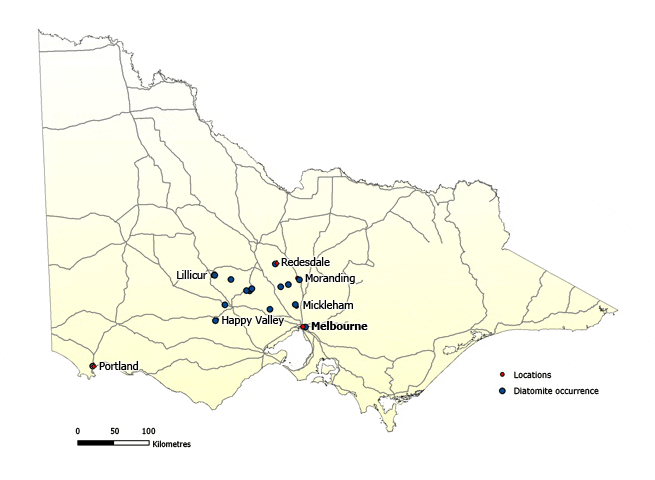Diatomite
Diatomite is a siliceous sedimentary rock composed mainly of the fossilised skeletal remains of diatoms, which are single-celled organisms related to algae. Diatomite has a porous structure, which makes it ideal for use as insulation or as a filtering material (its primary use). Most Victorian diatomite, however, is too impure for use as a filtering agent. When dry, diatomite has the appearance of chalk but is much lighter and is chemically inert.
Most diatomite deposits in Victoria are found in freshwater lake deposits that have interacted with lava flows. The main deposits are at Lillicur, Newham, Moranding, Redesdale, and Linton (Happy Valley), all in central Victoria. Diatomite in these deposits forms layers between or beneath flows of basalt. Individual diatomite beds are laminated, banded or massive and are generally flat lying and between one and three metres thick. The Moranding deposit was worked in the 1940s by underground and open-cut methods.
Diatomite, historically mined at Lillicur, was used as a carrier for chemicals and as filler material in the manufacture of paints and plastics. There is potential to find further resources that are located underneath basalt cover.
Other Victorian diatomite deposits are at Gisborne, Glengower, Mickleham and Portland.
View the full list of industrial minerals
Further information
Industrial minerals and rocks of Victoria – Geological Survey of Victoria Report 102
Maps
To create your own maps online and in real time, plan exploration activities by viewing land status, or download GIS data to add to your own maps, visit GeoVic.

Page last updated: 12 Jan 2023